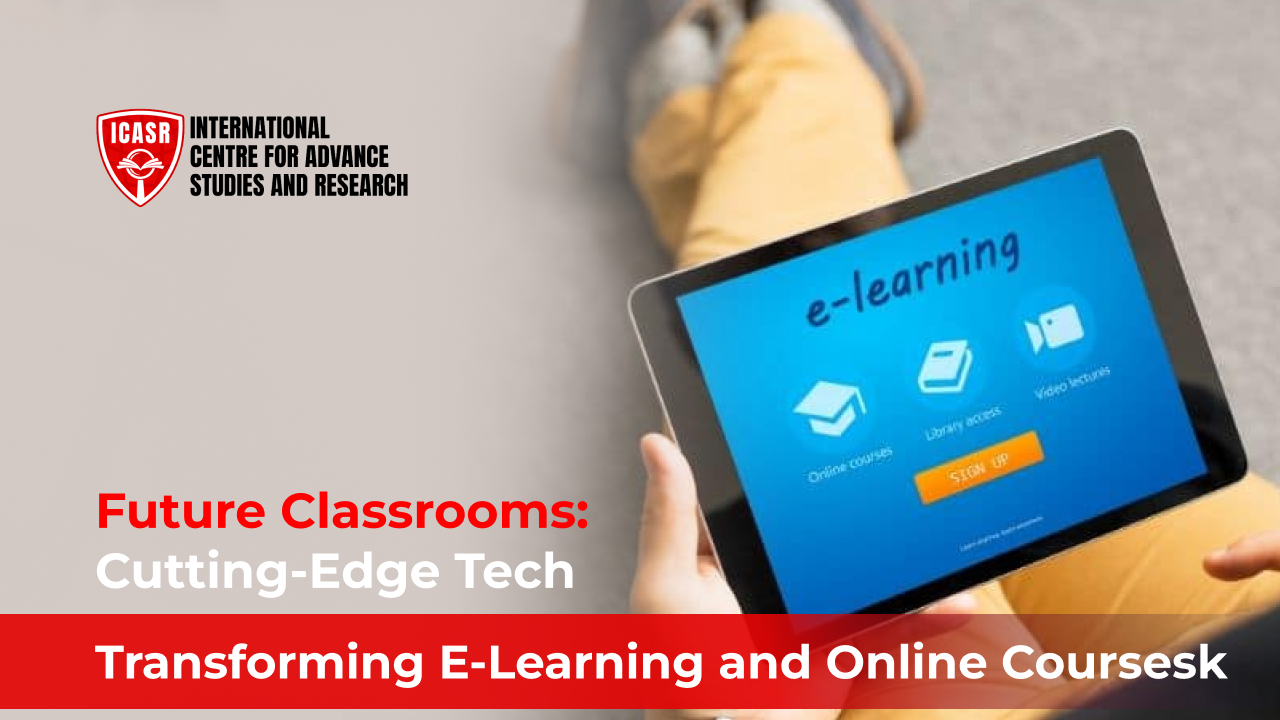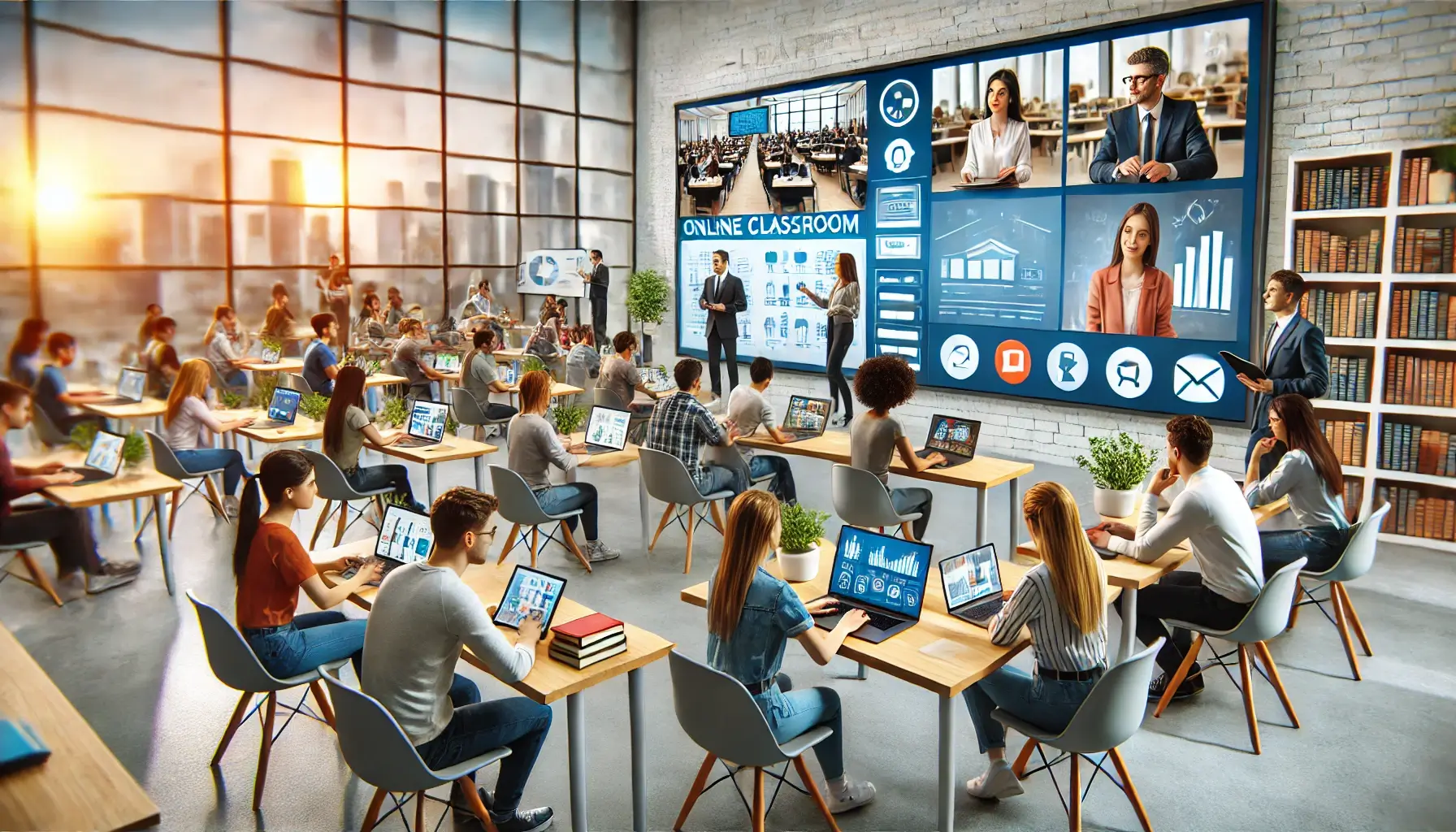Empower your mind with the endless possibilities of e-learning, where knowledge knows no boundaries and every click is a step towards a brighter future.
Picture a classroom that doesn't have any walls around it. It is a place where learning goes beyond using books and listening to speeches; instead, it turns out to be an interactive experience that arouses various ideas among students. It's not a part of a be an interesting perspective on how digital classrooms evolving teaching. This blog is an account of how new things have changed e-learning through online courses into a realm of immersive learning, engaging students like never before.
The Rise of Cutting-Edge Tech in Classrooms
A traditional classroom has served its purpose across generations, Present-day kids grow around digital equipment and are motivated by interesting things; therefore, what becomes important is applying modern tech which will studies more engaging for everyone regardless of their ways of perceiving information; moreover, such innovations promote profound knowledge comprehensions among pupils. Below are the leading agents reshaping the educational landscape:
- Artificial Intelligence: AI has the potential to revolutionize education by personalizing learning. Visualizing an AI-controlled platform which adapts lessons according to the strong and weak points of each learner, in the process tuning down the task levels and giving directed assistance. Thus, this customized manner allows each learner to go through their speed thereby ensuring maximum acquisition in academics.
- Virtual Reality (VR): VR transports students through immersive experiences of far-off worlds such as the ocean depths, rainforest depths or Mars's surface. Not only does VR erase different physical boundaries but it also enables them to witness the history, and science concepts like never before.
- Augmented Reality (AR): Imagine holding a book that becomes exciting with three-dimentional sculptures and interactive animations when you look through a tablet or mobile phone. AR is able to make less comprehensible topics more concrete; moreover, it helps to produce immersive learning engaging students with theoretical knowledge and practical skills.
- Gamification: Gamification introduce game mechanics such as points, badges, as well as leaderboards in the learning process. Thus, it allow students to make use of their inborn spirit of competition thereby inspiring them to complete mission and learn new skills. Educational games make studying an interesting and interactive process, building a positive attitude towards gaining knowledge.
- Big Data and Leraning Analytics: Big data analytics enable instructors to monitor the progress of learners and figureout where they could be hitting the wall. Such data could be employed in customizing learning, developing targeted interventions and checking that no learners are left out in the success trajectory.
The Evolution of E-Learning and Online Courses:
Not only are these latest technologies affecting regular classroom but they are changing the face of online learning.
- Interactive Content: Gone are the days of static text and videos when it comes to interactive content for e-leraning. Today, quizzes, simulations and branching scenarios are some of the interactive elements that make up today's e-learning platforms. These types on content have been designed in such way as to ensure students stay involved throughout their learning processes.
- Micro-learning: Micro-learning targets brief details that are easy to understand and implement. It is suitable for students with limited concentration span who needed to learn at intervals and while on transit.
- Accessibility: Latest advancements in technologies have resulted in making education more accessible than ever before. Closed captions, as well as additional features for students with disabilities such as keyboard navigation, text-to-speech conversion make it easier for them to learn and prosper.
The Future of Learning:
Adding high-tech to the class offers several advantages which include:
- High Engagement: Interactive learning experience create more interest for students while increasing their activeness during learning.
- Improved Retention: The retention of students increases when they involve themselves in alluring activities such as VR simulations as well as gamified experiecne.
- Accessinility: Accessibilty is about enabling students based on their capacity, including those with disabilities and remote learners through online platforms and digital tools.
- 21st Century Skills Development: Adopting cutting-edge technology equips students with 21st century skills imperative for success as it develops their literacy, creativity, problem-solving and collaboration which are all vital in an ever-changing job market.
Challenges and Considerations:
Although cutting-edge technology has many benefits, there are challenges, too:
- High-engagement: Interactive learning experience create more interestfor students while increasing their activeness during learning.
- Equity and Access: There exist some students who do not have similar access to technology or to a trusted web connection. This can serve to worsen already existing educational disparities.
- The Human Touch: Teachers should never be supplanted by technology. Appering in different capacities, educators foster critical thinking, touch emotins and facilitate discussions for children.
The Role of Educators in the Evolving Classroom:
Robots will never be able to replace teachers in education; yet teachers need to reposition themselves by become facilitators or supporters as technology will enable them customize instruction and develop motivating interactions. In the following are some of the key competencies that an educator must possess in years to come.
- Tech Savvy: In order to apply technology adequately in their lesson plan, educators will have to be comfortable using technology.
- Data Analysis: To identify students's needs and change their instruction accordingly, teachers will be able to understand data coming from learning analytics platforms.
- Content Creation: One of the outcomes of the development of blended learning is that educators might have to generate content themselves or change old ones in order to be adopted to an online format.
The Future of Learning:
The future of education involves combining both real-world and virtual forms of learning. This means that the best parts of traditional classrooms and internet-based classes are combined. In a more specific way, think it of as a class where students get to understand the basic ideas using only online tutorial materials and then work together with their teacher on assignment/projects that are meeting in class. This approach is for different learning taste and makes both human and contact and technical breakthrough effective.
The integration of new technologies in education is changing everything and creating a potential world full of excitement as seen below. When teachers put their thoughts towards blended, individualized tutoring and inclusivity; they theorize that through these initiatives , teaching can be more attractive, efficient and open for every person regardless of age or ability. Nevertheless, we must recognize that the instrument is technology but human beings are still necessary teachers of high quality education.


